Unprocessed FAQ: Flours & Grains
Sep 26, 2019

In today’s October Unprocessed FAQ, I’m going to try to clear up some confusion surrounding one of our most common ingredients: Flours and grains.
“Intact” Grains
Although you probably won’t hear “intact” very often when it comes to grains (it’s not common on labels), it’s the best word I’ve found to describe them. The idea is that it’s the whole grain, completely intact as nature made it — it hasn’t been cut, ground, or pulverized in any way. When you buy a bag of whole kernels of barley, wheat, rye, farro, kamut, spelt, teff… all that’s been done to it is that it’s been harvested, cleaned, and dried (and, if it’s not organic, probably sprayed with pesticides). You could do all that at home (though it’s probably not worth the effort!), so those totally pass the kitchen test.
“Whole” Grain
Anything that includes the entirety of the grain — the bran, germ, and endosperm — can be called “whole grain,” even if it’s been ground up (or even separated and put back together). Steel-cut oats, for example, would be whole grain, since they start with intact oats, and then cut them with steel blades. (Here’s more on oats and oatmeals.)
Here are some of the things to watch out for on labels when you’re shopping for whole grain products.
“Whole Grain Flour”
This is really just taking the grain and grinding it down even more, until it’s a fine powder. For it to be called “whole,” it still needs the bran, germ, and endosperm — though technically, it’s legal to separate all the components and then put them back together.
In a previous October, Cassidy from Bob’s Red Mill shared a very informative post about flour — it’s well worth the read.
Refined Flours, or simply: “Flour”
It’s safe to assume that anything called “flour” without the word “whole” preceding it has been refined — it’s lacking the nutrient-rich germ and bran. It might be called “All Purpose Flour,” or “Unbleached Flour” or simply, “Wheat Flour.”
By law in the United States, unless it’s certified organic, manufacturers are required to add back in some vitamins, because the refining process strips them out. In Canada, even organic flour must be enriched.
Theoretically, you could grind your own grains at home, and then take the resulting whole grain flour and pass it through finer and finer sieves, until you’ve sifted out all the bran and germ, leaving just the light endosperm. You’d probably never do it, but in theory you could.
To bring this back to the Kitchen Test, then: Strictly speaking, “unbleached, unenriched flour” will pass the test. (That does not mean I’m suggesting you eat it.) But if it’s been bleached or enriched — two things you wouldn’t do at home — it doesn’t pass the test.
Watch out for the “Wheat Bread” trick that many companies and restaurants play, trying to make you think it’s healthier than any other bread. All it means is that it’s made with wheat flour, which is most likely refined. Your best bet is to get “100% Whole Wheat Bread,” and short of that, seek out “Whole Wheat Bread.”
“White Flour” and “White Whole Wheat Flour”
This is very confusing. Most flour (whole or refined) these days comes from a species of wheat called “red wheat.” If you buy a bag of white flour, it’s probably been milled and refined (and bleached) from red wheat. However, “White Whole Wheat” refers to whole wheat flour that comes from “white wheat,” a different species.
So regular wheat flour probably comes from red wheat. “White Whole Wheat Flour” actually comes from white wheat. Got it? (If not, check out this on Wikipedia.)
Recently, Bob’s Red Mill rebranded their “Organic Hard White Whole Wheat Flour” (pictured above) as “Organic Ivory Wheat Flour” – I’m guessing to help reduce some of this confusion.
Matty and I prefer using White (Ivory) Whole Wheat Flour at home, because it’s a little bit less dense than the red wheat, so it makes a slightly lighter loaf of bread (or pizza crust!). Both Red Wheat and White Wheat have effectively the same nutrition, so that’s not really a concern.
“Sprouted” Grains
Grain kernels are actually the seeds of a plant–so sprouted grains are simply seeds that are starting to grow (nowadays, that means they’ve been deliberately germinated). They’ve become popular recently because they’re more easily digestible and nutritious. I’m not convinced there’s a huge health benefit–but I also don’t think they will hurt, and may indeed provide at least some benefits. I’ve also found that store-bought breads that promote the fact that they’re made with sprouted grains are more likely to be healthier overall and pass the kitchen test (such as Ezekiel 4:9 and Alvarado Street Bakery), so I usually pick those up from the shelf first.
(Sidenote: Watch out for raw alfalfa sprouts and bean sprouts, like you’d find on a salad bar – unfortunately they’re now a common source of food poisoning. That’s not an issue with grains, which you’re going to cook anyway.)
White Rice and Pearl Barley
White rice is a common question — it’s basically brown rice that has had the outer layers of the grain removed, or “polished.” The question then becomes, can this be done at home, at least in theory? I found this forum post that shows someone doing it at home, and you can even buy a countertop rice polisher on Amazon (looks like they all ship directly from Japan, which sounds about right). I think the process is similar for pearl barley. So I’d say that this does pass the test… of course, from a nutritional perspective, I think we’re better off eating brown rice instead.
Quinoa
While technically not a grain (it’s a “pseudocereal” since it’s not a member of the grass family), for our purposes it might as well be. Quinoa (pronounced “keen-wah”) is great stuff: high in nutrition; a wonderful, nutty flavor; and great hot or cold. Here’s how to make fluffy quinoa.
Gluten-Free Flours
Carrie Vitt wrote a guest post during a previous challenge, outlining many of the gluten-free flours and grain-free flours that have flooded the market in recent years, so definitely go check that out if you’re wondering about those.
Applying This Info for the Challenge
100% Whole Grain Flour and unbleached, unenriched flour both pass the kitchen test. Bleached and/or enriched flours do not. So read the labels, and eat accordingly!
—
Did I miss anything? Let us know in the comments section below.
If you haven't taken the October Unprocessed pledge yet, please do! And then encourage your friends to join in -- it's a lot more fun that way!
Wheat © 2014 Brad Higham.
Jars of Whole Grains © 2014 Annie Corrigan/WFIU Public Radio.
Bobs Red Mill Organic White Whole Wheat Flour © 2009 Sarah Gilbert.
Sprouted Wheat Berries © 2010 Veganbaking.net.
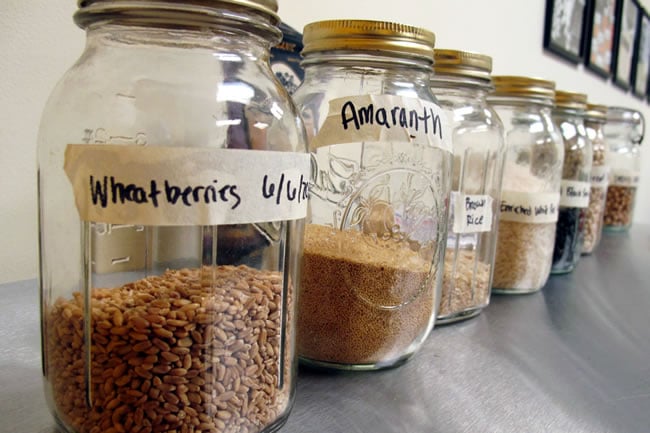
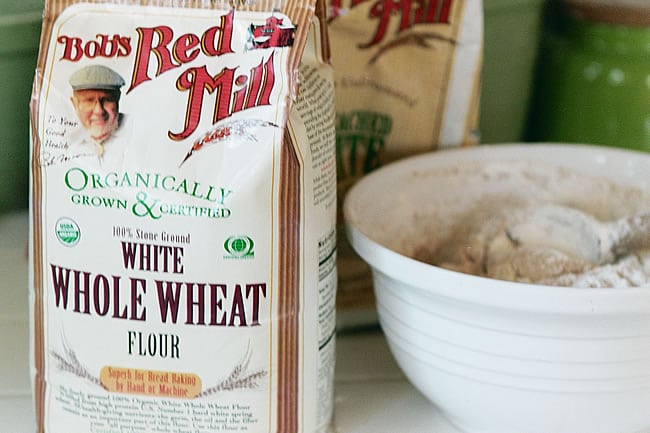
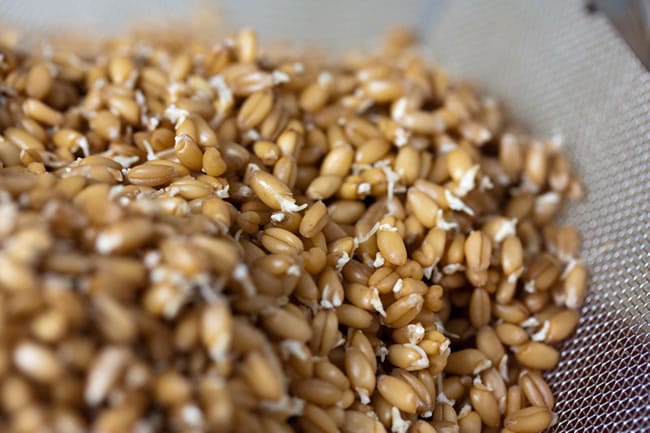
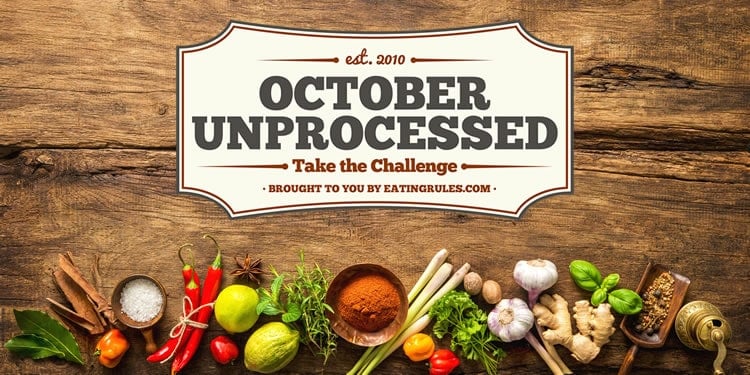
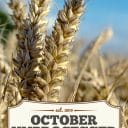




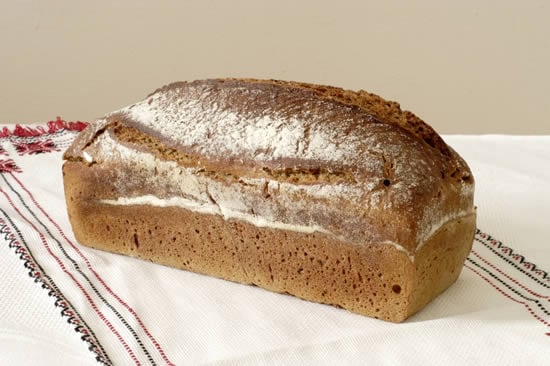















Can someone please help me. I had a test done to see which foods I am sensitive to. I thought I might be gluten, which want on the list. However it said that I was sensitive to processed flour. I have been making my own flat bread from organic flour which is a white flour. I feel a bit better but I am not sure if I have understood it right. Is unprocessed flour whole meal or organic?
You mentioned that you don’t see much difference between sprouted grain and non sprouted grain. There is a huge difference, the amino acids and protein increases as much as %160 in bread with 50% sprouted grain flour. That means 10g of protein goes up to as much as 16g. And if the bread is made with 100% sprouted flour the protein is even higher. I would call that a huge difference for health. Also, the nutrients increase. So sprouted grain breads are not only higher in protein and nutrients, they are also easier on the digestive system. Knowing that, I couldn’t imagine eating non sprouted bread again. Sprouted grain breads go back at least 2000 years to the Essenes, and even back then they were lauded for their health benefits. That said, I think that fresh is key, so store bought doesn’t pass the test for me, it must be… Read more »
Please tell me how you do this!? I want to make my own bread like they would have hundreds of years before. I figured out how to make yeast from flour.. but I need to figure out what grains were used, how to sprout them, how to make that into flour and then I can bake some beautiful and healthy bread! Any links, recipes, books etc… please let me know! You are so lucky to have had a smart and wonderful grandma! I’ve been a city girl all my life and the old traditions are calling me! I want to live as process free as possible! I figured out the butter, cheese and whip cream. But so much more to learn!
P.s. do you recommend a certain stone mill?
Thanks so much for any and all advice you can give!
So, what is wheat gluten? We have a wonderful bread that has the right ingredients, but it also has some wheat gluten. We can’t decide if it is all right to eat.
Holly from Ftesno